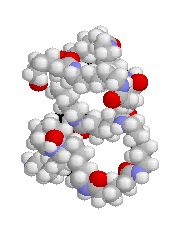Polymers in Construction: Stronger, Lighter in weight, and More Sturdy
Polymers in Construction: Stronger, Lighter in weight, and More Sturdy
Blog Article
Harnessing the Power of Polymers: Comprehending the Substantial Usages and Positive Influences
Polymers, with their diverse chemical structures and buildings, have come to be indispensable in numerous markets, transforming the method we connect with products on a daily basis. As we check out the substantial usages of polymers and their function in shaping a more sustainable, reliable, and cutting-edge future, it ends up being evident that their possibility is as vast as the molecules themselves.
Adaptability in Everyday Products
Polymers exhibit impressive versatility in a broad range of daily items, showing their indispensable duty in modern culture. From the adaptable plastic housing of smartphones to the sturdy fibers in garments, polymers have actually transformed the way we interact with products in our everyday lives. One of the most typical uses polymers is in product packaging products. Polyethylene, for instance, is commonly utilized in food product packaging as a result of its light-weight, long lasting, and moisture-resistant buildings. Furthermore, polymers play an essential function in the auto industry, where they are used in making lightweight components that enhance gas effectiveness.
In addition, polymers have found their way right into the medical care field, with applications varying from clinical tools to medication distribution systems. Eco-friendly polymers are utilized in stitches and implants, lowering the risk of adverse responses in patients. In the building and construction market, polymers are included right into paints, adhesives, and insulation products, improving sturdiness and energy performance. On the whole, the flexibility of polymers in daily items underscores their relevance in driving advancement and improving high quality of life.
Sustainability in Material Innovations
With the recurring focus on ecological consciousness and source performance, the emphasis shifts towards sustainability in material developments, mirroring an expanding dedication to responsible manufacturing practices throughout numerous markets. Over the last few years, there has actually been a noteworthy rise in the advancement of sustainable products, particularly within the realm of polymers. These ingenious products are made to minimize environmental effect throughout their whole lifecycle-- from sourcing raw products to disposal or recycling.
One substantial aspect of sustainability in material advancements is the idea of biodegradability. Eco-friendly polymers have actually amassed focus for their ability to break down naturally into non-toxic byproducts, reducing waste and pollution. Furthermore, making use of recycled polymers originated from post-consumer or post-industrial sources is acquiring traction as a way of promoting a circular economic climate and decreasing reliance on virgin materials.

Enhancing Performance in Engineering
Enhancing performance in engineering requires a precise integration of advanced technologies and precise methodologies to optimize capability and performance in different industrial applications. Polymers play an important function in this endeavor, offering a large range of advantages that boost the performance of engineering products and parts.
One secret element of enhancing efficiency in design is the capability of polymers to improve longevity and toughness. By integrating polymers into design styles, producers can create light-weight yet robust frameworks that can stand up to high levels of stress and pressure. This particular is particularly beneficial in markets such as aerospace, automotive, and building and construction, where the demand for strong find more information yet light-weight materials is vital.
Additionally, polymers can also improve performance by supplying thermal and chemical resistance, decreasing rubbing, and improving electric conductivity. These homes make polymers perfect for a wide variety of design applications, including seals, bearings, finishes, and electronic elements. Polymers. By harnessing the special residential or commercial properties of polymers, designers can optimize the performance of their layouts and create much more effective and trusted products
Influence On Medical Improvements
The integration of sophisticated polymer modern technologies has substantially added to revolutionary improvements in the clinical area. Polymers have played an important duty in modern medical improvements, varying from medicine delivery systems to tissue engineering. Among the vital locations where polymers have made a substantial impact is in the growth of eco-friendly sutures and implants. These polymers can be tailored to degrade at a certain rate, allowing for far better injury recovery and minimizing the need for added surgeries to get rid of implants.
Additionally, polymer-based materials are progressively being utilized in clinical tools such as catheters, stents, and prosthetics because of their biocompatibility and flexibility. For instance, polymer layers on clinical gadgets helpful hints can prevent infections and improve general client end results. Furthermore, developments in nanomedicine have actually made it possible for making use of polymer nanoparticles for targeted medication delivery, boosting the effectiveness and decreasing adverse effects of numerous medicines
Role in Environmental Preservation

Moreover, polymers are used in water therapy procedures, aiding in the purification and recycling of water resources. This helps in lowering water air pollution and ensuring access to tidy water for both human usage and environmental wellness. Polymers additionally contribute in agriculture check that through the development of eco-friendly composts and controlled-release plant foods, advertising sustainable farming techniques.
Conclusion
In conclusion, polymers have actually proven to be a functional and important material in numerous industries, from day-to-day products to design and medical improvements. Understanding the substantial usages of polymers emphasizes their significance in driving technology and progress in several areas.
Report this page